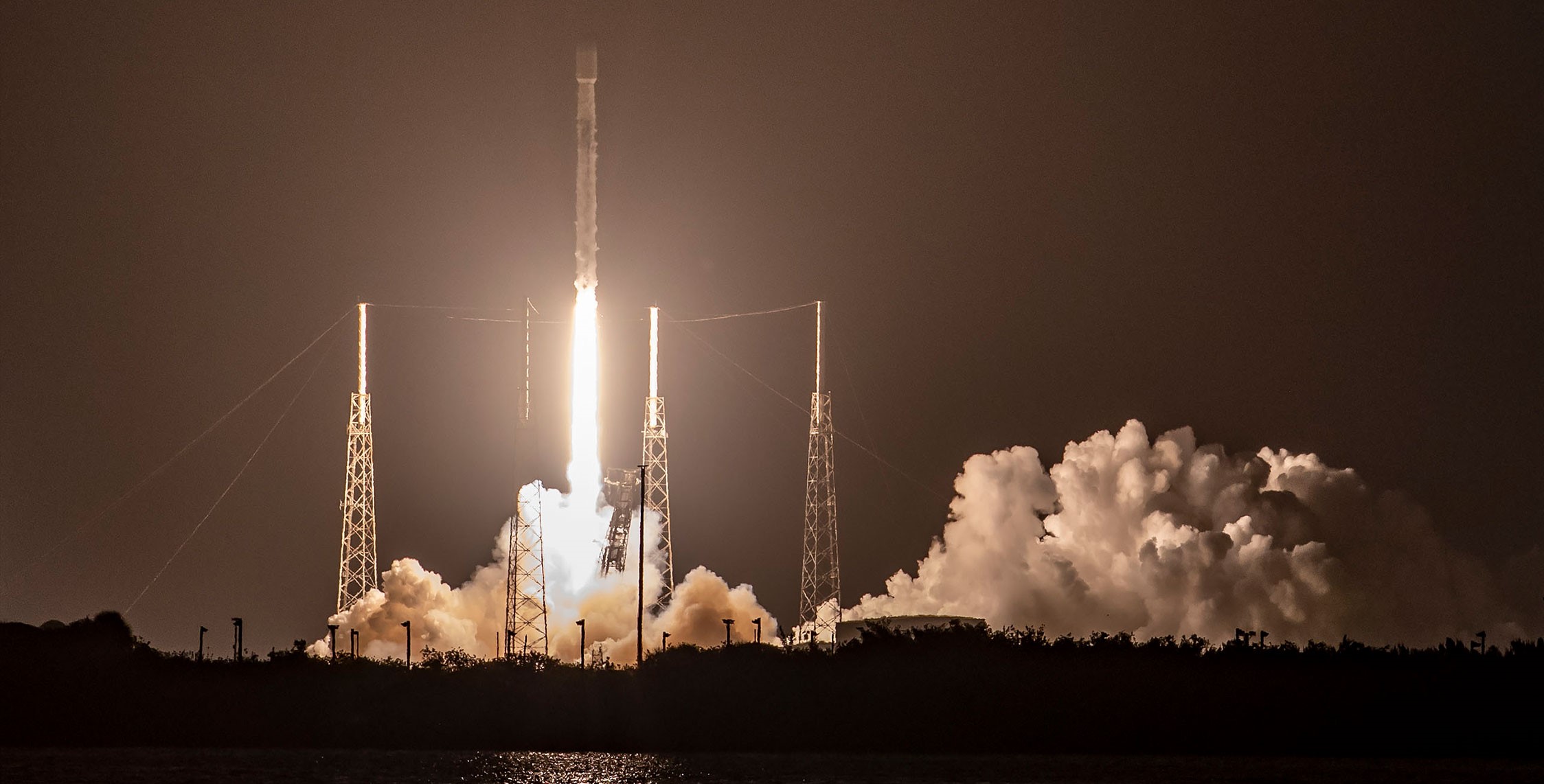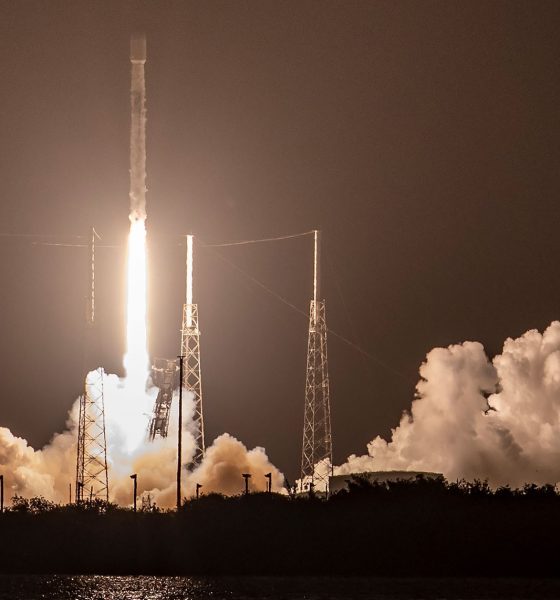SpaceX has set a new record for the heaviest payload launched on a Falcon 9 rocket as part of a routine Starlink satellite launch.
Simultaneously, the rocket responsible for setting that new record launched with a reusable booster that was last spotted clinging to life – engines heavily damaged – on the deck of a SpaceX drone ship eight months prior. At the time, it wasn’t clear if the Falcon 9 booster – theoretically capable of supporting at least 12-14 more launches – would be able to recover from the damage and fly again.
It’s now clear that the booster suffered no major invisible damage, ultimately allowing SpaceX to complete repairs and return the rocket to service at the cost of a lengthy delay.
According to spaceflight writer Alejandro Alcantarilla Romero, one additional cost – at minimum – was a full set of new Merlin 1D engines. Sometime shortly after Falcon 9 B1069’s flawless December 2021 launch and landing debut, a robotic helper known as Octagrabber most likely lost its grip on the booster while attempting to secure it. Likely already in high seas, the conditions prevented SpaceX workers from safely boarding the ship and manually securing the booster, which was then free to slide about its tilting deck.
Alternatively, it’s possible that Octagrabber successfully secured the booster but was then subjected to truly awful sea conditions. Designed to passively hold boosters to the deck with its sheer weight, even the tank-like robot wouldn’t be able to save a booster if a storm caught the drone ship off guard and the waves were high enough.
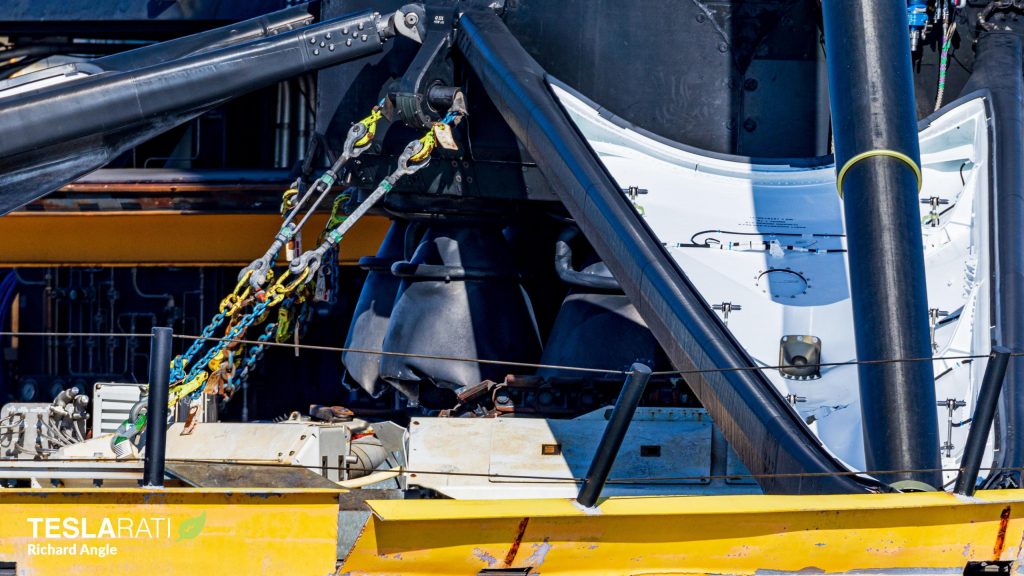
Either way, B1069 returned to port pressed against the lip of drone ship Just Read The Instructions’ (JRTI) deck, leaning hard to port. Worse, each of its nine fragile Merlin 1D engine nozzles had been crushed like tinfoil against Octagrabber, damaging them well beyond repair. While there’s a chance that SpaceX was or will be able to salvage the parts of B1069’s original M1D engines above their bell nozzles, it’s little surprise that the company had to fully replace those engines before the booster could fly again.
The damage B1069 suffered on its first launch makes it even more impressive that SpaceX attempted to break Falcon 9’s payload record with its return to flight, suggesting that the company was extremely confident in its repairs.
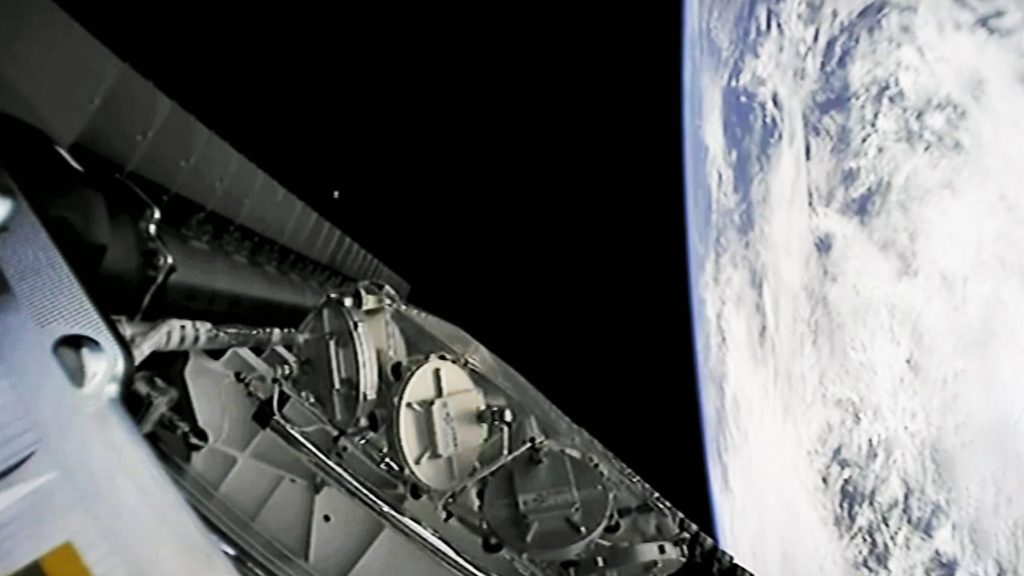
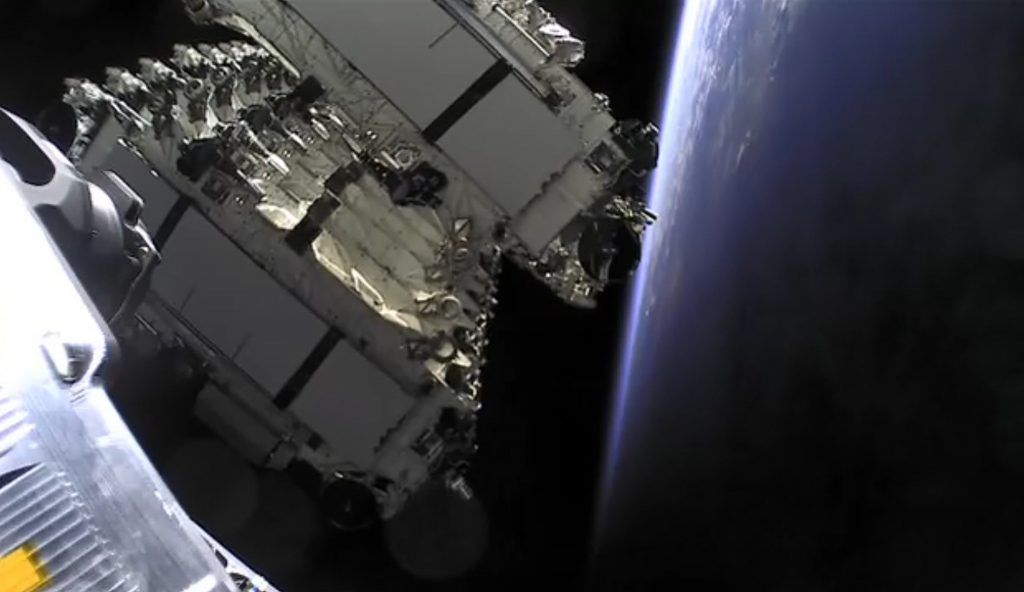
SpaceX confirmed that Falcon 9 broke the record with its launch of 54 Starlink V1.5 satellites at the end of its hosted webcast, revealing that the rocket launched 16.7 metric tons (~36,800 lb) to Low Earth Orbit (LEO). The last confirmed record – claimed by CEO Elon Musk – was 16.25 tons spread over 53 Starlink V1.5 satellites, which doesn’t entirely add up unless SpaceX added several kilograms to the mass of each satellite between March and August 2022.
Assuming that both numbers are comparable, a roughly 3% improvement is far from an earth-shaking or surprising step forward for SpaceX, a company, renowned for relentless iterative improvement. What is impressive, however, is that SpaceX pushed the envelope while Falcon 9 is both fast approaching its 150th consecutively successful launch and the only rocket currently certified to launch multiple NASA astronauts to the International Space Station. SpaceX’s fifth operational NASA astronaut launch (Crew-5) is scheduled as early as October 3rd. If SpaceX pushing the envelope on Starlink 4-23 had somehow caused the launch to fail, all Falcon 9 rockets would have likely been grounded for months, almost certainly delaying Crew-5 and throwing NASA’s ISS program into chaos.
Given how successful and reliable Falcon 9 already is, it would be hard to blame SpaceX if it decided to freeze the program and avoid additional changes, even if those changes could slightly improve the rocket’s performance. Instead, the company somehow manages to continue upgrading Falcon 9’s performance without obviously impacting its reliability or incurring the wrath of its strictest US government customers. Even Falcon landings, once considered a secondary objective that could be allowed to fail, haven’t suffered. Starlink 4-23 marked SpaceX’s 64th consecutively successful booster landing.
Up next, SpaceX is scheduled to launch Starlink 3-4 no earlier than (NET) August 31st, Starlink 4-20 NET September 4th, and Starlink 4-2 NET September 7th.

Elon Musk
Elon Musk and Tesla AI Director share insights after empty driver seat Robotaxi rides
The executives’ unoccupied tests hint at the rapid progress of Tesla’s unsupervised Robotaxi efforts.

Tesla CEO Elon Musk and AI Director Ashok Elluswamy celebrated Christmas Eve by sharing personal experiences with Robotaxi vehicles that had no safety monitor or occupant in the driver’s seat. Musk described the system’s “perfect driving” around Austin, while Elluswamy posted video from the back seat, calling it “an amazing experience.”
The executives’ unoccupied tests hint at the rapid progress of Tesla’s unsupervised Robotaxi efforts.
Elon and Ashok’s firsthand Robotaxi insights
Prior to Musk and the Tesla AI Director’s posts, sightings of unmanned Teslas navigating public roads were widely shared on social media. One such vehicle was spotted in Austin, Texas, which Elon Musk acknowleged by stating that “Testing is underway with no occupants in the car.”
Based on his Christmas Eve post, Musk seemed to have tested an unmanned Tesla himself. “A Tesla with no safety monitor in the car and me sitting in the passenger seat took me all around Austin on Sunday with perfect driving,” Musk wrote in his post.
Elluswamy responded with a 2-minute video showing himself in the rear of an unmanned Tesla. The video featured the vehicle’s empty front seats, as well as its smooth handling through real-world traffic. He captioned his video with the words, “It’s an amazing experience!”
Towards Unsupervised operations
During an xAI Hackathon earlier this month, Elon Musk mentioned that Tesla owed be removing Safety Monitors from its Robotaxis in Austin in just three weeks. “Unsupervised is pretty much solved at this point. So there will be Tesla Robotaxis operating in Austin with no one in them. Not even anyone in the passenger seat in about three weeks,” he said. Musk echoed similar estimates at the 2025 Annual Shareholder Meeting and the Q3 2025 earnings call.
Considering the insights that were posted Musk and Elluswamy, it does appear that Tesla is working hard towards operating its Robotaxis with no safety monitors. This is quite impressive considering that the service was launched just earlier this year.
Elon Musk
Starlink passes 9 million active customers just weeks after hitting 8 million
The milestone highlights the accelerating growth of Starlink, which has now been adding over 20,000 new users per day.

SpaceX’s Starlink satellite internet service has continued its rapid global expansion, surpassing 9 million active customers just weeks after crossing the 8 million mark.
The milestone highlights the accelerating growth of Starlink, which has now been adding over 20,000 new users per day.
9 million customers
In a post on X, SpaceX stated that Starlink now serves over 9 million active users across 155 countries, territories, and markets. The company reached 8 million customers in early November, meaning it added roughly 1 million subscribers in under seven weeks, or about 21,275 new users on average per day.
“Starlink is connecting more than 9M active customers with high-speed internet across 155 countries, territories, and many other markets,” Starlink wrote in a post on its official X account. SpaceX President Gwynne Shotwell also celebrated the milestone on X. “A huge thank you to all of our customers and congrats to the Starlink team for such an incredible product,” she wrote.
That growth rate reflects both rising demand for broadband in underserved regions and Starlink’s expanding satellite constellation, which now includes more than 9,000 low-Earth-orbit satellites designed to deliver high-speed, low-latency internet worldwide.
Starlink’s momentum
Starlink’s momentum has been building up. SpaceX reported 4.6 million Starlink customers in December 2024, followed by 7 million by August 2025, and 8 million customers in November. Independent data also suggests Starlink usage is rising sharply, with Cloudflare reporting that global web traffic from Starlink users more than doubled in 2025, as noted in an Insider report.
Starlink’s momentum is increasingly tied to SpaceX’s broader financial outlook. Elon Musk has said the satellite network is “by far” the company’s largest revenue driver, and reports suggest SpaceX may be positioning itself for an initial public offering as soon as next year, with valuations estimated as high as $1.5 trillion. Musk has also suggested in the past that Starlink could have its own IPO in the future.
News
NVIDIA Director of Robotics: Tesla FSD v14 is the first AI to pass the “Physical Turing Test”
After testing FSD v14, Fan stated that his experience with FSD felt magical at first, but it soon started to feel like a routine.

NVIDIA Director of Robotics Jim Fan has praised Tesla’s Full Self-Driving (Supervised) v14 as the first AI to pass what he described as a “Physical Turing Test.”
After testing FSD v14, Fan stated that his experience with FSD felt magical at first, but it soon started to feel like a routine. And just like smartphones today, removing it now would “actively hurt.”
Jim Fan’s hands-on FSD v14 impressions
Fan, a leading researcher in embodied AI who is currently solving Physical AI at NVIDIA and spearheading the company’s Project GR00T initiative, noted that he actually was late to the Tesla game. He was, however, one of the first to try out FSD v14.
“I was very late to own a Tesla but among the earliest to try out FSD v14. It’s perhaps the first time I experience an AI that passes the Physical Turing Test: after a long day at work, you press a button, lay back, and couldn’t tell if a neural net or a human drove you home,” Fan wrote in a post on X.
Fan added: “Despite knowing exactly how robot learning works, I still find it magical watching the steering wheel turn by itself. First it feels surreal, next it becomes routine. Then, like the smartphone, taking it away actively hurts. This is how humanity gets rewired and glued to god-like technologies.”
The Physical Turing Test
The original Turing Test was conceived by Alan Turing in 1950, and it was aimed at determining if a machine could exhibit behavior that is equivalent to or indistinguishable from a human. By focusing on text-based conversations, the original Turing Test set a high bar for natural language processing and machine learning.
This test has been passed by today’s large language models. However, the capability to converse in a humanlike manner is a completely different challenge from performing real-world problem-solving or physical interactions. Thus, Fan introduced the Physical Turing Test, which challenges AI systems to demonstrate intelligence through physical actions.
Based on Fan’s comments, Tesla has demonstrated these intelligent physical actions with FSD v14. Elon Musk agreed with the NVIDIA executive, stating in a post on X that with FSD v14, “you can sense the sentience maturing.” Musk also praised Tesla AI, calling it the best “real-world AI” today.
